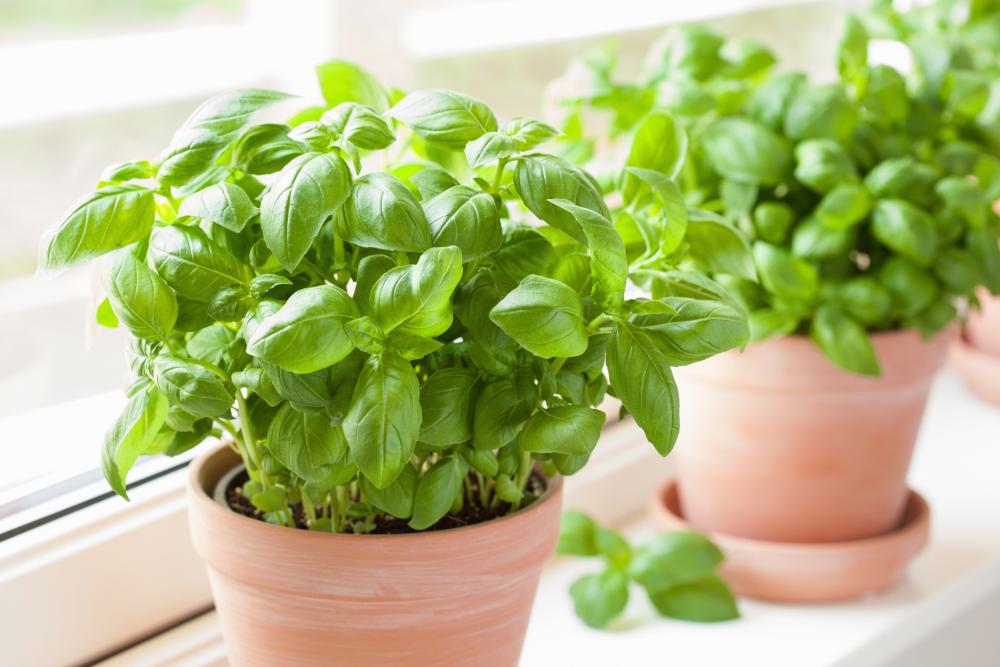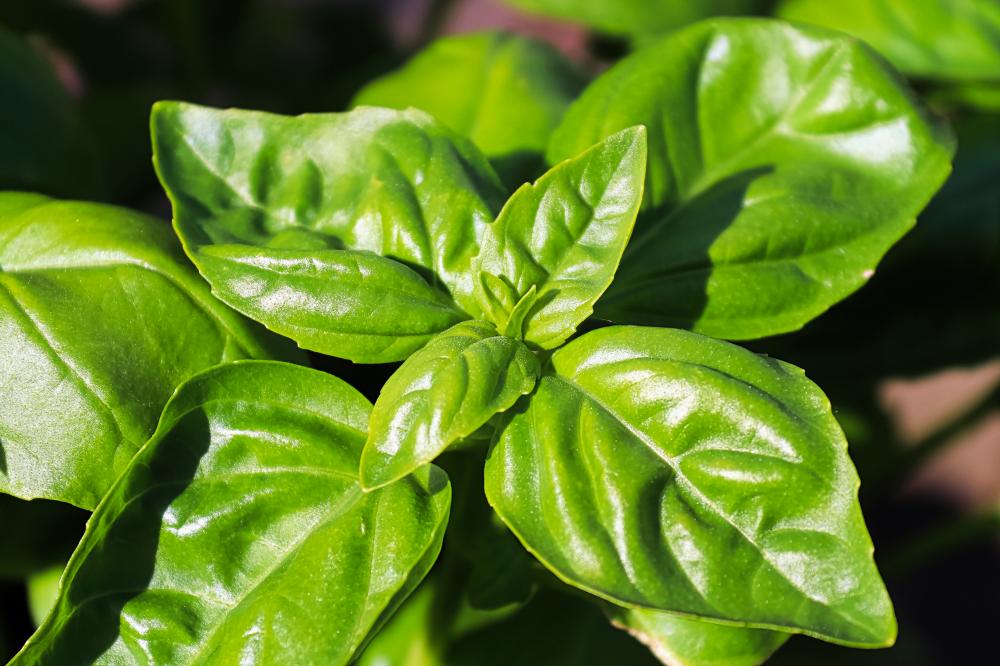Basil Growing Problems And How To Solve Them
One of the more interesting facts about gardening is that the more varieties a plant has the more problems you might have growing it. This is especially true if you’re growing a hybrid that inherits health problems from both of its parents. Since basil has been around for thousands of years, it has more cultivars than natural species.
Some of the basil growing problems hit hardest where it matters, in the leaves themselves. They turn yellow, develop holes, or simply curl and become bitter. Other problems have to do with the drop in temperatures and the plant’s survival is at stake. So we put together some of the most common problems with growing basil and recommended a few solutions for each problem.
Basil Leaves Are Curling
When it comes to basil, anything that affects the leaves affects the harvest. All the hard work you put into growing and caring for the herb goes to waste. Without the leaves, there’s nothing left of the plant. Even the aromatic stems are not a good replacement for the green and fragrant leaves.
The crinkled and deeply veined leaves of the basil are a delight to look at. They’re usually dark green and grow flat. But sometimes, they curl under and turn into a tube. This is not normal and you need to intervene to save your basil harvest. The causes often vary from sunlight deprivation to inadequate watering and diseases.
How to Fix It
For every possible cause of basil leaf curl, you’ll need to come up with a different strategy to fix it. Sometimes there’s more than one cause to the problem. Other times it’s not clear why the leaves of the herb are curling under when the water, sunlight, and fertilizer are good. In that case, you’ll need to look for pests.
- Light: If your basil is not getting enough sunlight, the leaves will curl, turn yellow, and even drop. If you’re growing the basil in a pot, move it to a window facing west or south where it gets 6 hours of sunlight every day in the spring and summer. If it’s growing in the garden, remove any obstacles that cast a shadow on the herb.
- Irrigation: Basil prefers the soil to be moist but not overly wet. It’s also sensitive to dry soil. However, when in doubt, err on the side of drought. Check the soil before you water the plant and make sure the top two inches are dry. On average the plant needs one inch of water every week during the growing season. In the fall and winter, for perennial basil, cut back and only water it when the soil is dry.
- Pests: Some pests will make holes in the leaves as they feed on the sap, while others will damage the structure of the plant and prevent moisture and nutrients from reaching the leaves. The usual suspects are often aphids, scales, and spider mites. Spray them with neem oil or give the herb a good rub with rubbing alcohol.
Woody Basil Plants
Along with the aromatic leaves, the stems of the basil go into many recipes, tinctures, and fusions. You can add them to lemonades, fruit juices, desserts, or sauces and marinades. But they have to be tender stems with a healthy texture and fragrance. Because that’s not always the case with basil herbs. Sometimes the stems turn woody where they lose their supple texture, color, and aroma.
The stems harden for many reasons. Most notably, it’s the lack of moisture in the soil that makes the stems woody. Sometimes fungal infections are behind this unusual phenomenon. And after you have done an audit of the growing conditions surrounding the herb, you’ll look for signs of disease and infections and treat them to bring the herb back to full health.
How to Fix It
Start by checking the soil pH. It’s usually the last thing you’d look at. But if you stray away from 6.5 to 7.3, you’re risking having woody basil stems. Amend the soil with lime to increase acidity. One pound of lime increases the acidity by 0.5 points for every one square foot.
Keep the herb well hydrated especially during the hot summer months. If the soil dries out too fast, increase the water quota to 2 inches and irrigate it 3 times a week. Keep the watering shallow and don’t get the soil wet. Too much water causes as much damage as dry soil.
One other reason for the woody stems has to do with flowering. As soon as the flower buds open, the plant shuts down all new leaf growth and focuses mainly on the blossoms and seeds. So cut off the flowers as soon as they open. Or you can cut off the flower buds early on and keep harvesting the leaves. This will trigger new growth and prevent the stems from turning woody.
Droopy Basil Plants
Even when you have done everything right and kept the basil herb growing in almost perfect growing conditions, things beyond your control can go wrong. Don’t blame yourself if one day you wake up to the sight of wilting or droopy basil plants. It’s not you, it’s a virus, bacterium, or a fungus spore that is responsible for this.
Of all the basil growing problems we have diagnosed so far, this is the most difficult to fix. We’re not just talking about changing the fertilizer or adjusting the light around the plant. This could be a serious infection such as fusarium wilt or a fungal disease such as root rot or leaf spot. So how would you fix this problem?
How to Fix It
The four main culprits that cause basil wilting are fusarium wilt, root rot, leaf spot, and pests. So let’s go through them one by one and find out what you can do about them.
- Fusarium Wilt: This fungal disease causes the leaves to turn yellow and wilt. It also impacts the stems which become stunted and short. If left untreated, the leaves will drop, and eventually the plant will die. There’s no treatment for this disease and you have to get rid of all the infected plants. The spores of the fungus remain in the soil for many years afterward.
- Leaf Spot: Another fungal infection that causes the leaves to wilt and drop. But first, you’ll see spots on the leaves which alert you that the plant is infected. Cut off the spotted leaves as soon as you see them to prevent the spread of the disease.
- Root Rot: A common disease that affects most plants and the main cause is overwatering. If the soil is poorly drained and wet all the time, the roots will rot which causes the leaves and stems to wilt. You might have to trim off the damaged roots and repot the plant in fresh soil.
- Pests: Most bugs that feed on the sap of the basil can drain the juices out of the stems and cause the leaves to wilt. Treat pests with neem oil spray which is quite effective and also eco-friendly.
Bitter Tasting Basil
If you harvest fresh basil leaves and add some to your lemonade or vodka drink for the sweet taste and aroma but instead of the usual refreshing basil fragrance, you detect an excessive sourness in the drink, your basil plants are infected.
Of course, there’s another simple explanation for the problem. The cultivar you chose is not sweet at all and has a bitter taste. These cultivars are not grown as a food source but rather for their medicinal properties. The only solution, in this case, is to start afresh with different basil varieties.
Another reason might be the lack of pruning. As you harvest the leaves and trim old stems, the plant grows new shoots and replaces the lost leaves with new and fresh ones. But if you do neither and let the herb grow without interference, the leaves turn sour as the plant goes to seed.
How to Fix It
The first thing you need to do is start pruning the herb. Collect all the old leaves and cut about one-third of the foliage at a time. Next week, repeat the same process. If you see any flower buds, cut them off before they even open. Within one month you would have removed all the foliage. This triggers new growth and the new leaves will taste sweet and normal.
Feed the plant with organic compost or aged manure if it’s growing in the garden. If it’s a potted plant, use a custom 5-10-5 fertilizer. Apply the plant food once every 3 weeks and water immediately after every application.
If that doesn’t fix the problem, try pruning the plant aggressively leaving only one stem. Fertilize and water the plant making sure it is getting enough sunlight.
If the new growth is also bitter, uproot the plants and find a different basil variety. I recommend sweet basil or Thai sweet basil. Both varieties are known for their extra sweet leaves.
Leaves Turning Yellow
We mentioned before that the leaves of basil are the main reason for its popularity. So you’d want to make sure these leaves are healthy before you harvest and consume them. One sign the leaves of basil are not healthy is when they turn yellow.
This is another complicated issue and not easy to fix. The reason being the causes behind the problem are too numerous and sometimes overlapping. You might think it’s drought when it’s in fact overwatering. Or it might be pests or the plant is not getting enough light.
You will need a lot of patience to deal with this problem. And after you’re gone through the list of causes and fixed them one by one, the plant will still have yellow and droopy leaves. In that case, you’re better off starting with new plants, preferably different cultivars, and growing them in a different part of the garden.
How to Fix It
We don’t recommend following all the solutions in the list below. That’s just a waste of your time. If you have tried a couple of fixes without any improvement in the basil situation, then you might be facing a serious problem such as fungal spores in the soil. Still, you could give it a try.
- Water: If you overwater or underwater the basil herb the stress alone can cause the leaves to turn yellow. Or in the base of wet soil, root rot might be the underlying cause. Make sure the soil is well-drained and allow the top 2 inches to dry out between irrigations.
- Fungus: Basil and fungus have a long and deep-rooted relationship. Not just because fungal spores cause root rot, but they also lead to downy mildew. Both of those infections cause the leaves to turn yellow. Cut off infected leaves in the case of downy mildew and repot the plant to get rid of root rot.
- Root-knot nematodes: Nematodes are small pests that work on the roots and base of the plant. Besides yellowing leaves, you’ll also notice galls on the stems. Uproot the plants, change the soil, and grow varieties resistant to the pest.
- Feeding: Lack of nutrients in the soil can also lead to yellowing leaves. Feed the plant with aged manure and organic compost and watch the leaves turn back into a healthy green.


